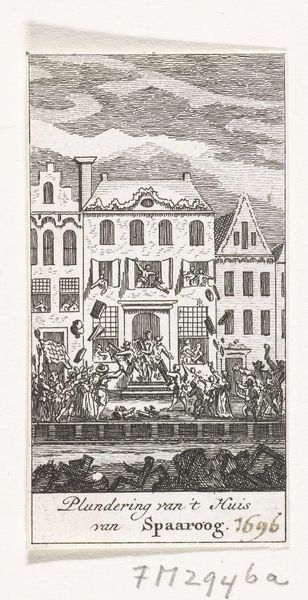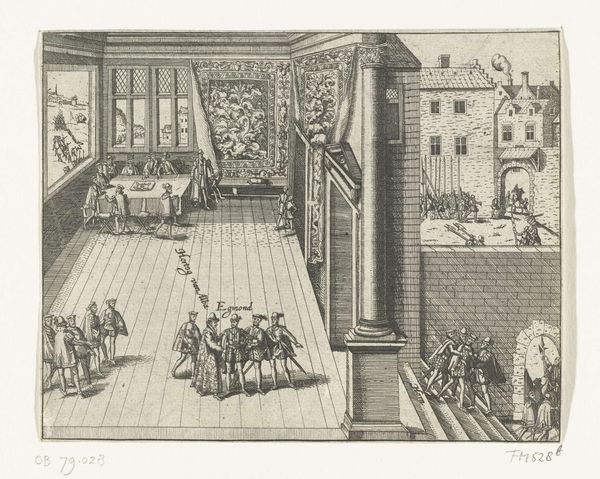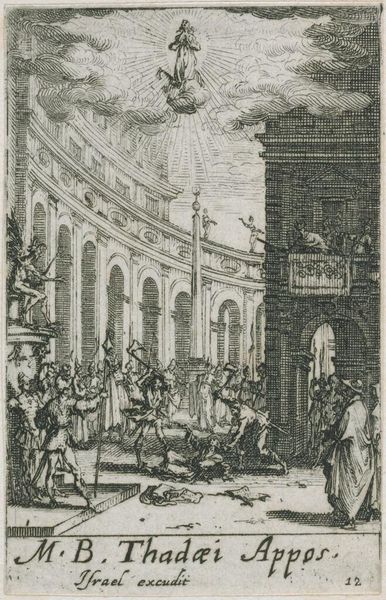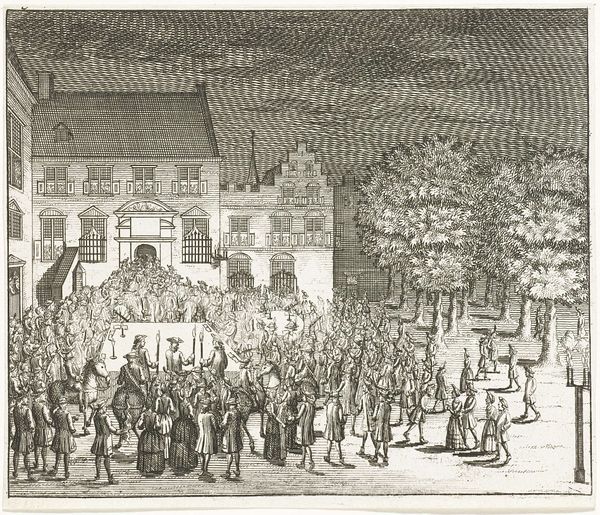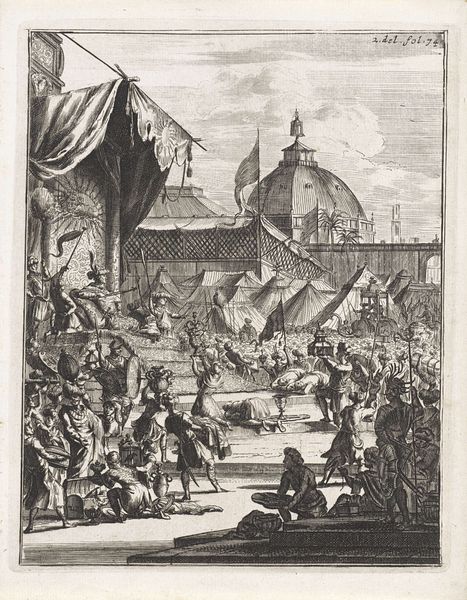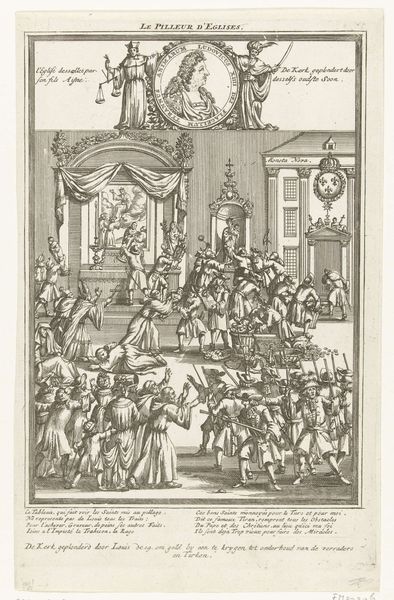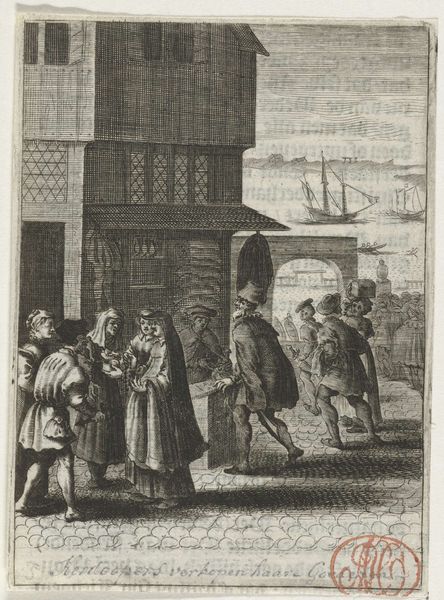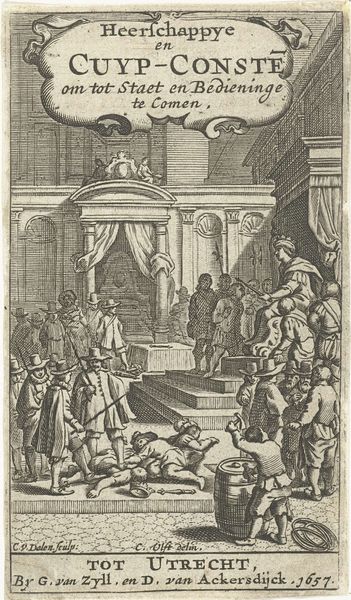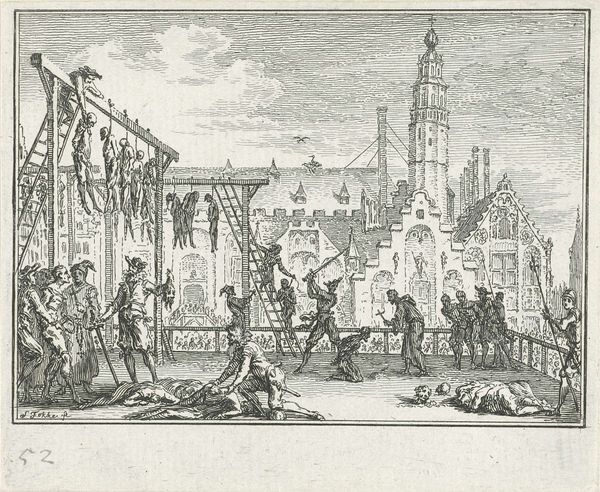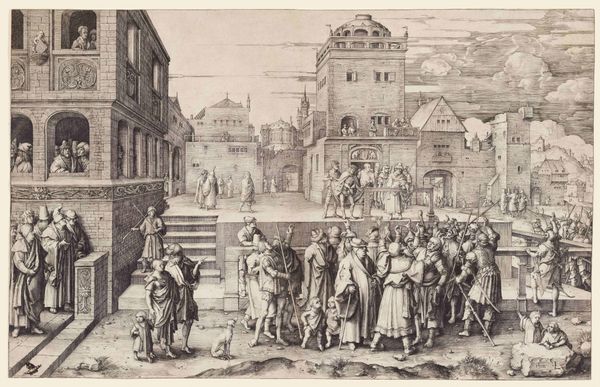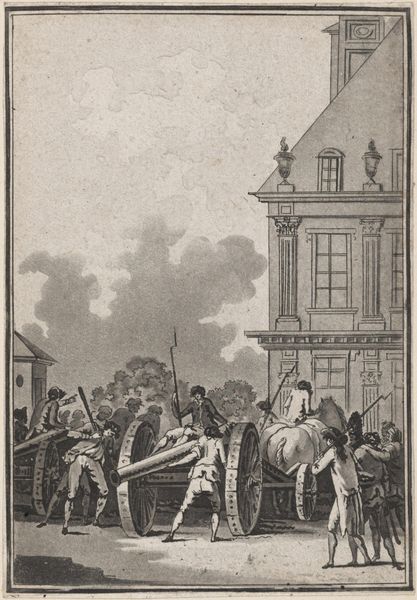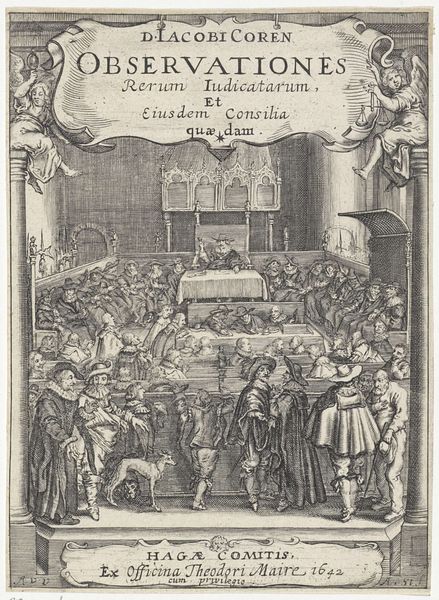
drawing, print, etching, engraving
#
drawing
#
baroque
#
pen drawing
# print
#
etching
#
old engraving style
#
history-painting
#
engraving
Dimensions: height 138 mm, width 85 mm
Copyright: Rijks Museum: Open Domain
Curator: This is an engraving from around 1700, titled "The Martyrs of Alkmaar Hanged in Enkhuizen, 1572." It commemorates a dark chapter of Dutch history during the Eighty Years' War. Editor: What strikes me immediately is the chilling contrast between the elaborate architectural backdrop and the brutal scene unfolding in the foreground. The lines are so precise, creating a sense of detachment despite the violent subject matter. Curator: Precisely. The architecture provides a spatial context, locating the event in a specific place, but it also emphasizes the power structures at play. The figures in the balconies looking down. It serves to emphasize the public and politically charged nature of these executions. Editor: Look at the layering of the scene: we have figures watching from the balconies and the victims suspended in the mid-ground, and still more corpses in the water in the very front. A formalist's perspective could look closely at how it compels the eye across a terrible landscape. The rigid horizontals and verticals add to a feeling of cold order. Curator: Indeed, the Baroque style of the print, with its sharp detail, actually heightens the emotional impact rather than softening it. The engraver is emphasizing the harsh realities faced by those who resisted Spanish rule and were, as a result, killed. This was part of the political and religious battle of the time. Editor: I think that by using such highly stylized elements, the artwork speaks to a bigger question of conflict: that it uses pattern and detail to talk about the place of death. Look at how the light creates hard patterns even on those hanged figures; their deaths are part of an overall organized perspective. Curator: The engraving is more than a depiction of violence. It’s a statement on religious freedom, political resistance, and the human cost of war. It provided a potent visual symbol for the Dutch struggle for independence and played a role in constructing the Dutch national identity. Editor: For me, this print succeeds by virtue of the many ways to find meaning from a difficult visual arrangement; one could look for historical lessons or, by contrast, ask questions about its many levels and structured line work. Curator: Indeed, this work reminds us that art can function as historical record and powerful political statement. Editor: And that even the darkest subjects can be mined for form and texture.
Comments
No comments
Be the first to comment and join the conversation on the ultimate creative platform.
